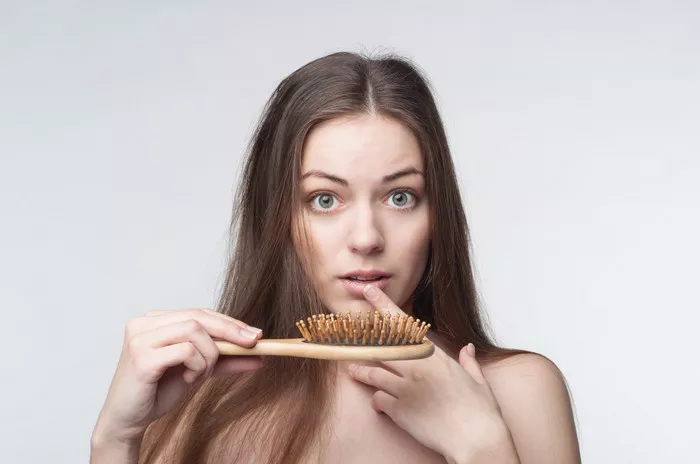Dealing with hair thinning can be a daunting experience, particularly if it’s your first encounter with this common concern. Before diving into a sea of products, it’s crucial to understand that there are two distinct types of hair thinning—reactive and progressive—each with its own set of causes and solutions. Armed with this knowledge, you can navigate the situation more effectively.
Understanding Reactive Hair Thinning:
Reactive hair thinning, scientifically known as telogen effluvium (TE), manifests as sudden and transient hair loss. Dr. Doshi explains that this condition disrupts the normal hair growth cycle, leading a higher number of follicles into the resting phase (telogen) prematurely. This results in increased hair shedding and noticeable thinning.
Causes of Reactive Hair Thinning:
Common triggers for TE include stress, rapid weight loss, thyroid imbalances, vitamin and mineral deficiencies, surgery, pregnancy, and high fevers. The effects of TE may not manifest immediately; it can take 6-12 months after the triggering event for noticeable hair loss.
Treatment for Reactive Hair Thinning:
The good news is that TE is usually not permanent or progressive. Dr. Kingsley reassures that TE due to stress or illness is self-limiting and corrects itself without specific treatment. Addressing underlying imbalances, such as taking supplements for deficiencies or using targeted scalp-care products, can help resolve the issue.
Understanding Progressive Hair Thinning:
Progressive hair thinning refers to a gradual and persistent reduction in hair density over time. Dr. Doshi notes that this is often a symptom of androgenetic alopecia, commonly known as male or female pattern baldness. It involves hereditary factors affecting both men and women, with distinct patterns of hair loss.
Causes of Progressive Hair Thinning:
Genetics, hormonal changes (especially dihydrotestosterone), and age contribute to progressive hair thinning. It typically presents as a receding hairline and crown thinning in men, while women may experience scattered hair loss on the scalp.
Treatment for Progressive Hair Thinning:
Treating progressive hair thinning involves optimizing diet, managing stress, and maintaining a healthy lifestyle. Medicated products like topical minoxidil may be recommended for female pattern baldness, along with hormone replacement treatments for postmenopausal women. In severe cases, hair transplant surgery may be considered.
Identifying Your Type of Hair Loss:
Distinguishing between reactive and progressive hair thinning is crucial for effective treatment. Sudden and significant shedding indicates telogen effluvium, while a gradual decrease in hair density, finer hair, and increased sensitivity may point to progressive hair loss. Consulting a trichologist or dermatologist is advised for accurate diagnosis and tailored solutions, especially if both types occur simultaneously.
In conclusion, arming yourself with knowledge about the specific type of hair thinning you’re dealing with empowers you to take proactive steps toward healthier, fuller strands. With the right understanding and guidance, managing hair thinning becomes a more manageable and reassuring process.


